
Effect of Leached and Organic Fraction of Municipal Solid Waste with Bulking Agents
The primary components of sorted municipal solid waste are cellulose (45%), hemicellulose (9%) and lignin (10%) [].Garcia et al. [] characterized different fractions of biodegradable municipal solid waste (meat, fish, fruit and vegetable, restaurant and household waste).Dry matter, ash content and crude protein in the different fractions varied between 11.9-59.0%, 4.9-21.8% and 11.6-57.0.
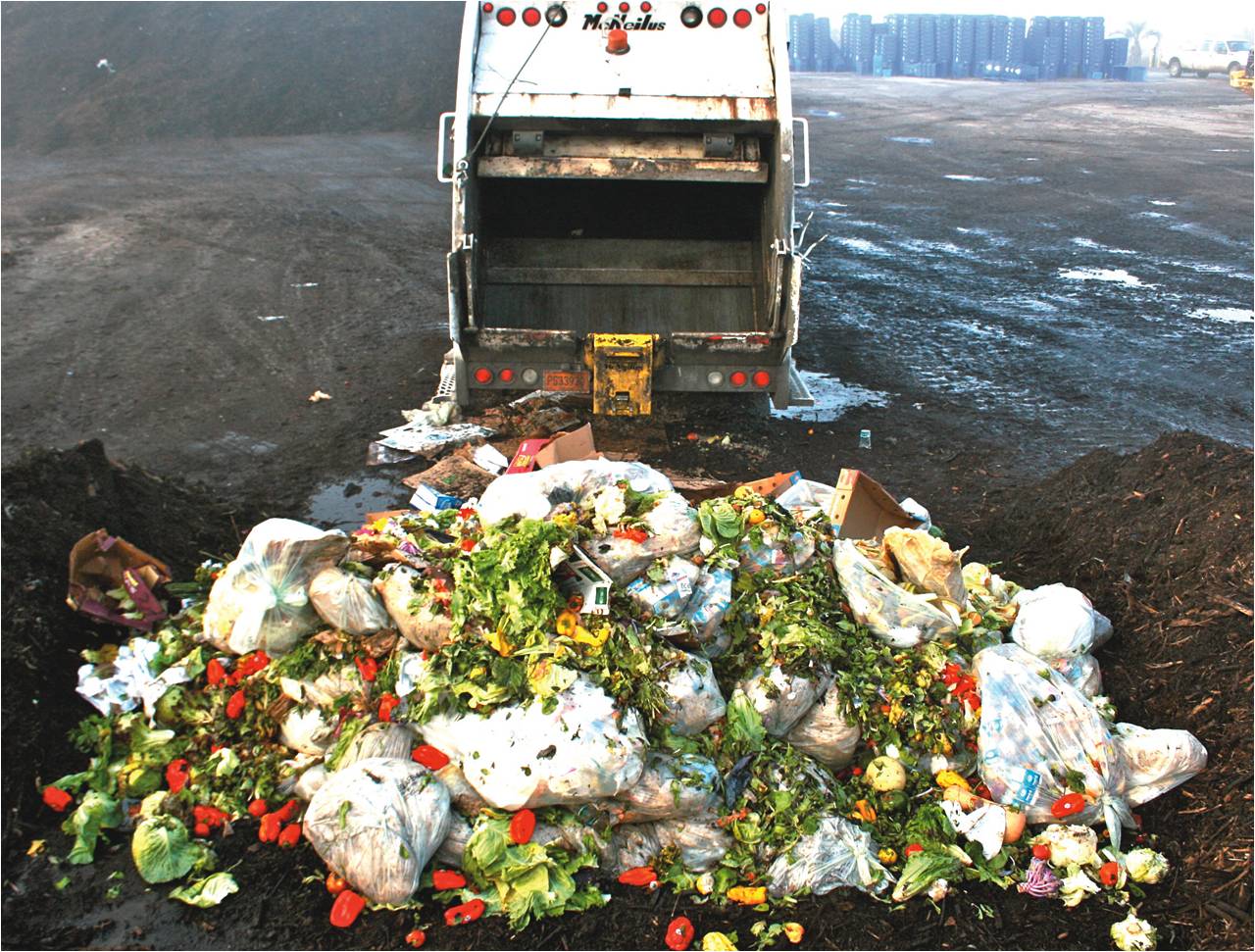
Food Waste Pretreatment!
The main objective of this research is to analyze the most relevant aspects of the management of the organic fraction of municipal solid waste (OFMSW) and the Sustainable and Circular Production Models (SCPMs) in Latin America and the Caribbean (LAC). The bibliometric method was used for the analysis of 190 studies obtained from the Scopus and Latin America and The Caribbean on Health Sciences.
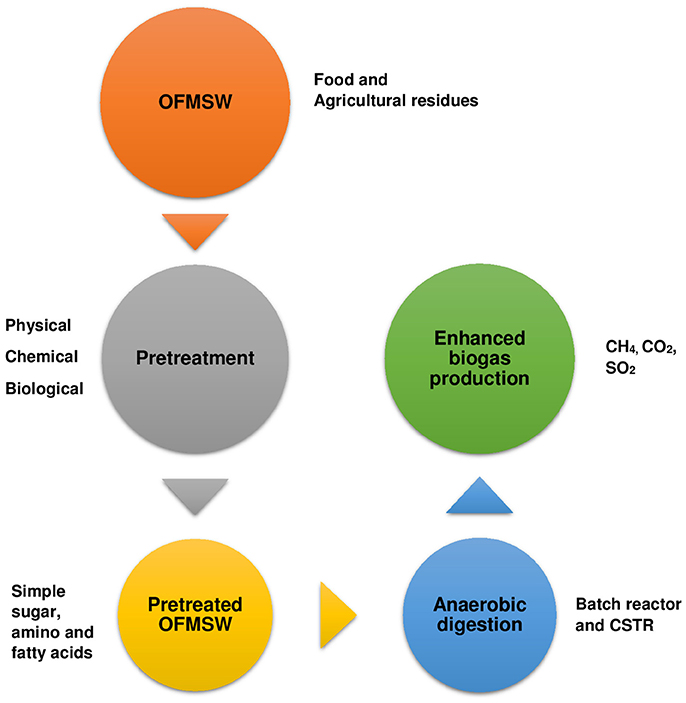
Frontiers Organic Fraction of Municipal Solid Waste Overview of Treatment Methodologies to
These organic fraction of municipal solid waste (OFMSW) may harm the environment when subjected to uncontrolled decomposition, may pollute soil and water, and also aggravate climate change by increasing greenhouse gas (GHG) emissions (Sisto et al., 2017). Proper waste management is essential for building livable and sustainable cities.

Figure 15 from GREENING WASTE ANAEROBIC DIGESTION FOR TREATING THE ORGANIC FRACTION OF
The definition of organic fraction of municipal solid waste (OFMSW) varies regionally and nationally; in the United States of America, OFMSW is considered a mixture of food, garden wastes and paper (Palmisano and Barlaz, 1996). In the European Union is considered a mixture of wastes from parks, gardens and kitchens (Al Seadi et al., 2013).

(PDF) Evaluation of organic fractions of municipal solid waste as renewable feedstock for
The organic fraction is usually the predominant fraction in municipal solid waste, so its recycling is a potential alternative to disposal in landfill sites, as well as helping to reach targets included in the European Circular Economy Package. The existing body of knowledge in this research field is very large, so a comprehensive review of the existing scientific literature has been.
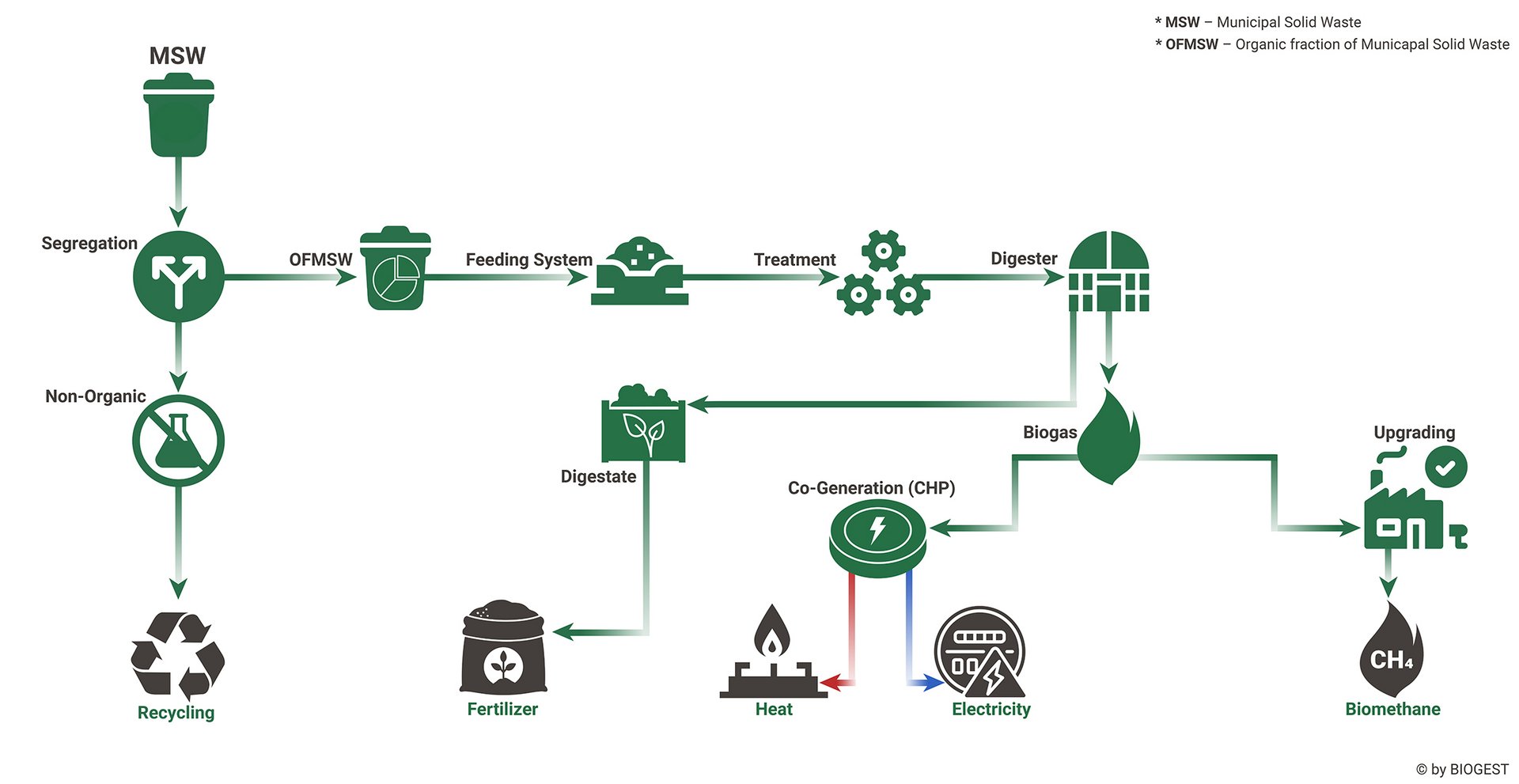
Biogest Municipal Solid Waste
In amending a package of Directives in order to implement the CE principles into European Union law, including the Waste Framework Directive and the Landfill Directive [3,4], a good deal of attention was paid to the Organic Fraction of Municipal Solid Waste (OFMSW), which is an important element in the planning of the sustainable MSW management.

Chapter 8 Production of Biogas From Sludge Waste and Organic Fraction of
The organic fraction of municipal solid waste (OFMSW) represents almost 50% of the global generated waste , and it is predicted to rise from current 2 Bt to 3.40 Bt by 2050 . Population growth, increased consumption, economic development, and rapid urbanization are main drivers of increasing rate of OFMSW generation [107, 108]. Efficient.

(PDF) Assessing the organic fraction of municipal solid waste as carbon source for Poly(3
Mechanical-biological treatment of municipal solid waste (MSW) facilitates reducing the landfill workload. The current research aimed to study general activity parameters, content, functions, and diversity of fungal and prokaryotic microbiota in mechanically separated organic fraction of MSW (ms-OFMSW) composting, without using bulking agents and process-promoting additives.

(PDF) Organic Fraction of Municipal Solid Waste Overview of Treatment Methodologies to Enhance
The organic fraction represents the prevailing portion of municipal solid waste (MSW) as it accounts for 30-40 % of the total amount of produced waste in Europe (FhG-IBP, 2014).The global per capita biodegradable waste production varies between 10 and 115 kg year −1; in Europe, it is approximately 95 kg year −1, which corresponded to over 70 million t year −1 in 2014.

(PDF) Biogas Harvesting from Organic Fraction of Municipal Solid Waste as a Renewable Energy
The BC were then applied to the AD of the organic fraction of municipal solid waste (OFMSW) using three doses (1, 5 and 10% w/w TS). Compared to the control, there was an increase in methane production in BC3 at doses 1 and 5% (+15 and +30%, respectively) and a decrease in BC1 and BC2 at 1% (-33 and -19%, respectively)..
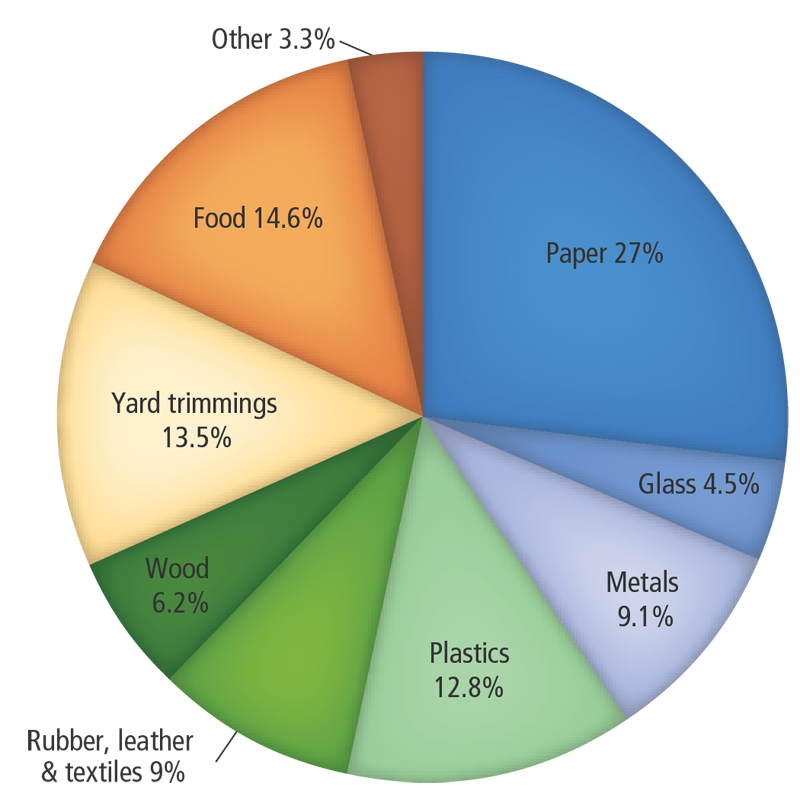
Municipal Solid Waste Wastes US EPA
The organic fraction of municipal solid waste (OFMSW) is a heterogeneous material which has various characteristics depending on the origin and collection system [].Despite the heterogeneity, OFMSW, mostly comprised of food waste, is characterized by high moisture content and high biodegradability [1,2,3].Food waste is generally defined as "materials for human consumption that are.

Showing characterization of Municipal Solid waste [20, 39, 40] Download Scientific Diagram
Municipal solid waste (MSW) generation is increasing globally, containing up to 57 % organic matter. Trapping and extraction of methane (CH 4) produced via anaerobic digestion (AD) of the organic fraction of MSW (OFMSW) reduces CH 4 released from landfills into the atmosphere. To estimate CH 4 production from OFMSW, mathematical models are frequently used, but their accuracy varies under the.

(PDF) Rigid bioplastics shape the microbial communities involved in the treatment of the organic
Fresh organic fraction of municipal solid waste (OFMSW) was collected from the canteen at Tongji University's Jiading Campus in Shanghai, China, and the main composition of the waste was easily biodegradable food waste, mainly including rice, noodles, steamed bread, vegetables, meat, tofu, and other ingredients.
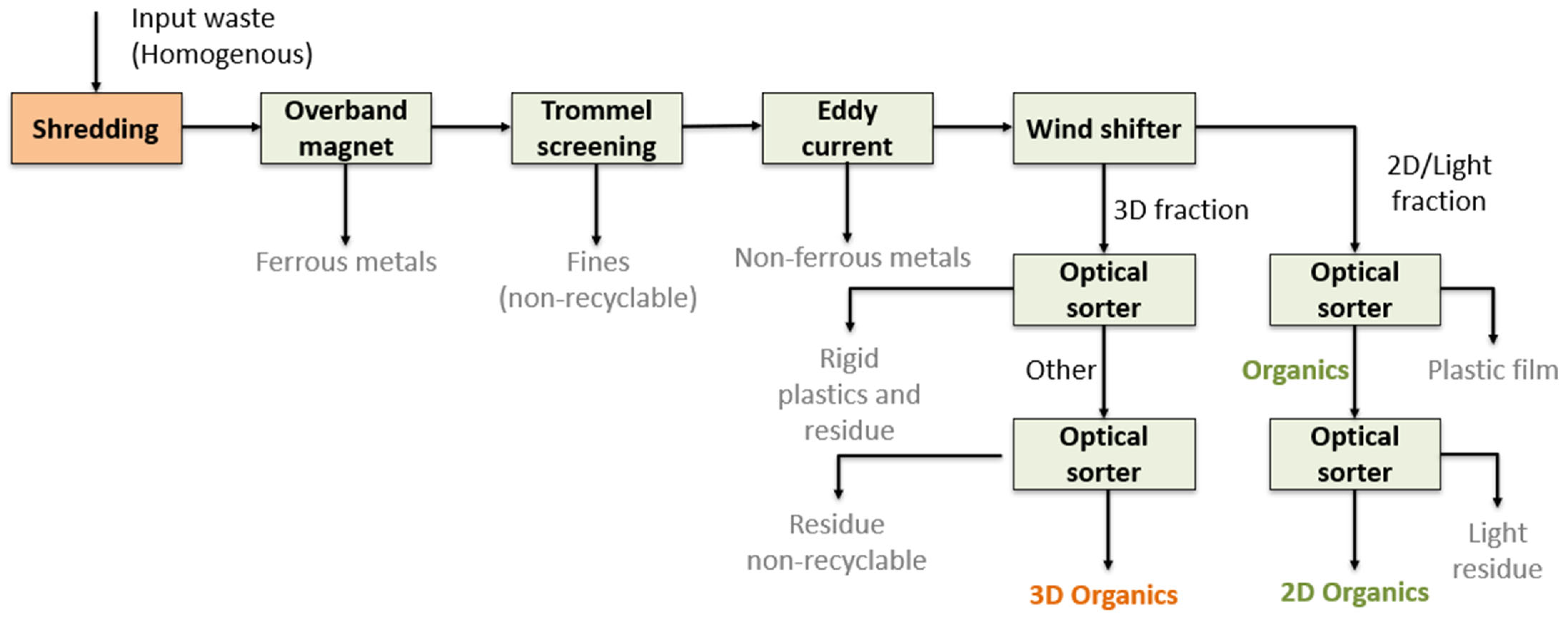
Biomass Free FullText Production of BioEthanol from the Organic Fraction of Municipal
Organic fraction of municipal solid waste and its proper disposal is becoming a serious challenge around the world. Environmental pollution, public health risk, and scarcity of dumping land are the aftereffects of its improper disposal. Embodied energy recovery associated with the organic waste along with waste minimization may be achieved using anaerobic digestion. The chemical composition of.

(PDF) Economic and environmental assessment of bacterial poly(3hydroxybutyrate) production from
During the last years, due to the strict regulations on waste landfilling, anaerobic digestion (AD) of the organic fraction of municipal solid waste (OFMSW) is increasingly considered a sustainable alternative for waste stabilization and energy recovery. AD can reduce the volume of OFMSW going to landfill and produce, at the same time, biogas and compost, all at a profit. The uncertainty about.

Energies Free FullText Upgrading the Organic Fraction of Municipal Solid Waste by Low
Organic fraction of municipal solid waste and its proper disposal is becoming a serious challenge around the world. Environmental pollution, public health risk, and scarcity of dumping land are.
- Actuacion Del Grupo En Ingles
- Almacenador De Claves Smartphone Hack
- Cartelera Cines Plaza Norte 2
- Kit Electrico Bicicleta Rueda Trasera
- Obres De Teatre A Madrid
- Cuales Son Los Elementos Quimicos Del Jabon
- Verbo To Be En Ingles Ejercicios
- Mejorar La Circulación De La Sangre
- Cambiar Herramientas Cassette Sram Nx
- Porcentaje De Inflacion De Venezuela